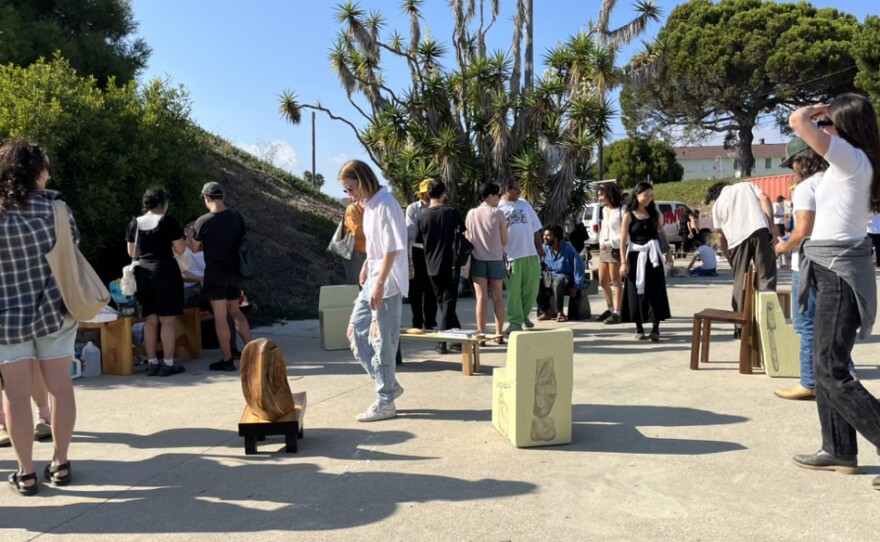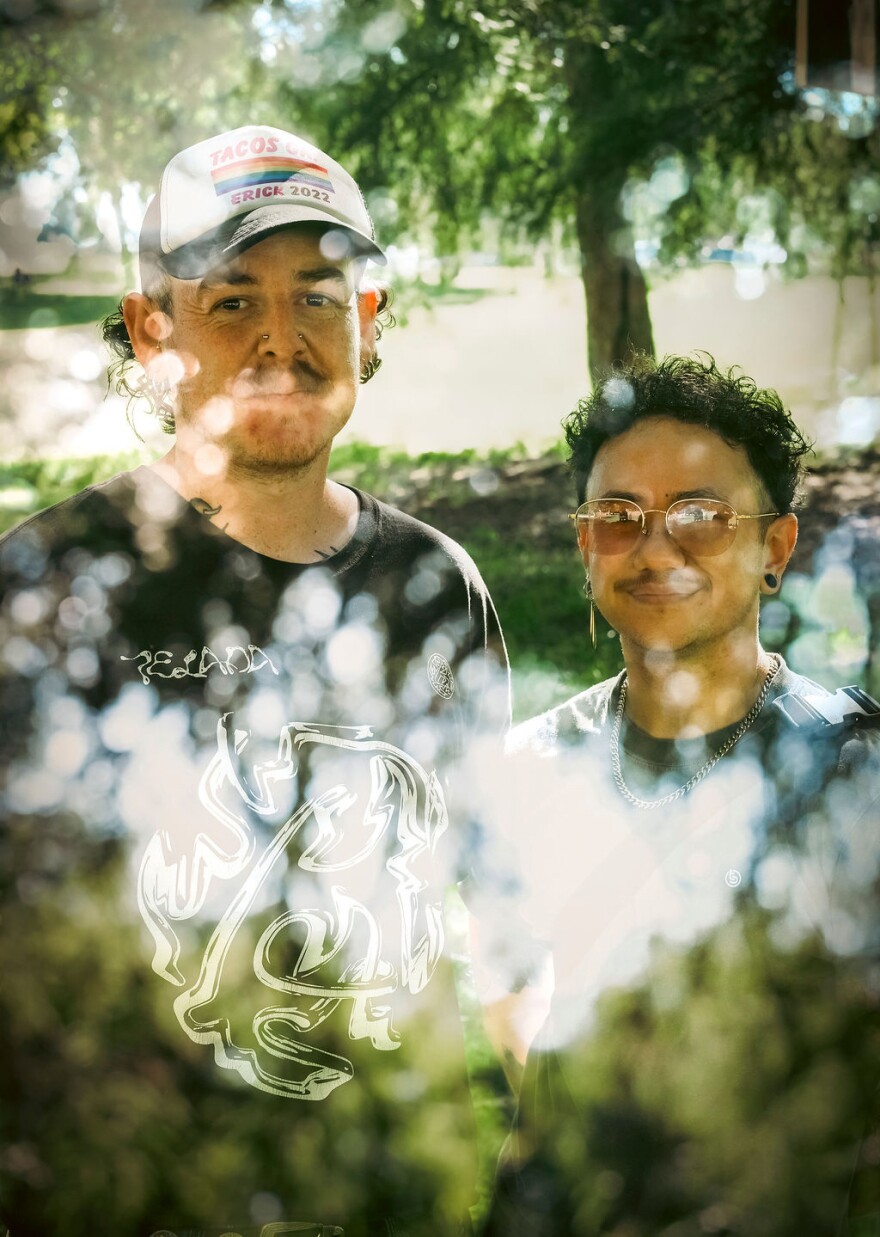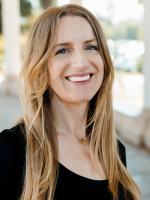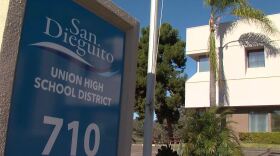Other Places Art Fair (OPaf) launched in 2018 in the San Pedro area of Los Angeles, founded by artist K Knittel to provide a space, platform and community for artists looking for alternatives to traditional fine art fairs.
Other Places Art Fair South
11 a.m. to 6 p.m. Saturday, Oct. 25
California Center for the Arts, Escondido, 340 N. Escondido Blvd., Escondido
Free ($5 suggested donation)
artcenter.org
opaf.info
Artists and art lovers may feel excluded from, or disinterested in, the fine art fair scene or "white cube gallery" world — where one significant hurdle is the prohibitive cost of exhibiting work.
OPaf's model is a pop-up, mostly outdoors showcase and gathering of experimental, DIY and unconventional art.

Local co-presenters mika Castañeda and Cat Gunn of Harvest & Gather participated in the Los Angeles event last fall. It sparked an idea.

"We were just so excited because it was like the art fair version of our curatorial project, and we — just through asking a couple questions — were like 'OK, would you ever come down to San Diego?' And she said, 'Yes,'" Gunn said.
San Diego's iteration, known as OPaf South, will be held outdoors at the California Center for the Arts, Escondido. Installation pieces from local and visiting artists will be on view, with booths from artist-run and DIY spaces, collectives and presses. There will be space set aside for readings, panels and workshops.
Participating artists include Burn All Books & Friends, Tigercrow Collective, Two Rooms (with artist Roman de Salvo revisiting his 15-year-old “Grape Maze” installation), Taller California, K.I.T.E. Project & Project PAINT and many more.
Gunn recently joined KPBS Midday Edition to discuss the project.
Interview highlights
On 'white cube galleries' and the artist economy
One thing is accessibility, which really sticks out to me. So with an art fair, it is generally like you see the images, it's a ton of booths, there's a ton of galleries, and maybe other projects there too, but it's really quite expensive to get there.
And then when you think about all the people that those art fairs bring in, then you think about the cost of like all these people traveling for basically a convention in one city. There's even models of art fairs that are marketing themselves as “affordable art fairs,” and (artists are) still paying $1,000 to $3,000 to participate in those. With Other Places Art Fair, it feels a lot more accessible because you're not paying more than about $300, maybe, to really participate.
And the fees that you pay for applying and for your booth go straight back into running the fair and paying people who are also artists and who run the fair. Artists need jobs that are more than just teaching or studio work — there's always like a side gig an artist is trying to pick up. It's another way that they get to interact and not just provide for themselves but support their community as well.
So there's something about the art fair structure that feels like a really, really expensive shopping mall to me, and I really love the more authentic, sincere take that Other Places offers.
On finding and redefining unconventional art
I think “unconventional” in a way where it's maybe a little bit less expected. Sometimes unconventional is not about what the art is, but also how you find it. So this idea of, let's say you're walking through a park and you're going to have a picnic between some trees and all of a sudden you see a bunch of paintings hung with bungee cords or ratchet straps — that feels a little unconventional because suddenly you're interacting with paintings outside in the park on a beautiful day, when typically you would think about a painting being hung in a home or in that white cube gallery.
What could the art world be if only we let ourselves imagine something beyond this white gallery?Cat Gunn, artist and curator
So there's something about going beyond the general expectation, where you get to tap into a really exciting energy of, “What could the art world be if only we let ourselves imagine something beyond this white gallery?”
On 'nomadic’ curatorial projects
We really started Harvest & Gather because although we're a nomadic project in that we don't have a physical space, we didn't want the limitations of living in a city where it would be really expensive to basically rent a gallery space to stop us from being able to make really fun, full shows. Ultimately, as curators, we’re always thinking about curating as a gesture that comes from a place of care.
We are also artists ourselves, and the project is kind of an extension of our modular installation practices. But we are really just seeking folks whose practice we believe in, and we realized — over time — that people see this as a gift, to be asked to do a show, even if It feels kind of funny to show your work at a bonfire at the beach or during a picnic at the park or anywhere else. But those small gestures feel really powerful when you see the community that gathers and how excited they are by everything that's happening, and ultimately just excited to be able to gather with all these other artists they really love and care about.
On San Diego's artist-run spaces and creative community
When artists are also hosting other artists, they just really understand what it means to dream within your practice. Something that mika and I love to ask when we work with folks is, “What are your dreams?” Whether we're being invited into a space for collaboration, like the Athenaeum or Two Rooms, which is run by Lizzie Zelter, who's also participating, we just love to know — what are your dreams, and how can we maybe help facilitate that as well?
With the artist-run projects and spaces around San Diego, I've always been so inspired because folks sometimes have ideas that I feel are a little bit beyond convention, like it's going back into that unconventional space. It's so exciting when I think folks take it there, or when it's like, I have this idea for shows where it's just a series of things that pop up around the various beaches around San Diego, and it's really tapping into the very specific location we're in.
San Diego has a lot of beautiful outdoor locations. It has a lot of beautiful weather and we're also very close to the border. So there's this also-beautiful portion of the art scene where a lot of folks are in this cross-border space of working between San Diego and Tijuana. And I think that those moments are so, so beautiful.
There's something I think about artist-run spaces where your own ego gets pushed aside a little because you are hosting other folks and getting to know them through that — and it feels less transactional, which I really love.
This interview has been edited for length and clarity.






